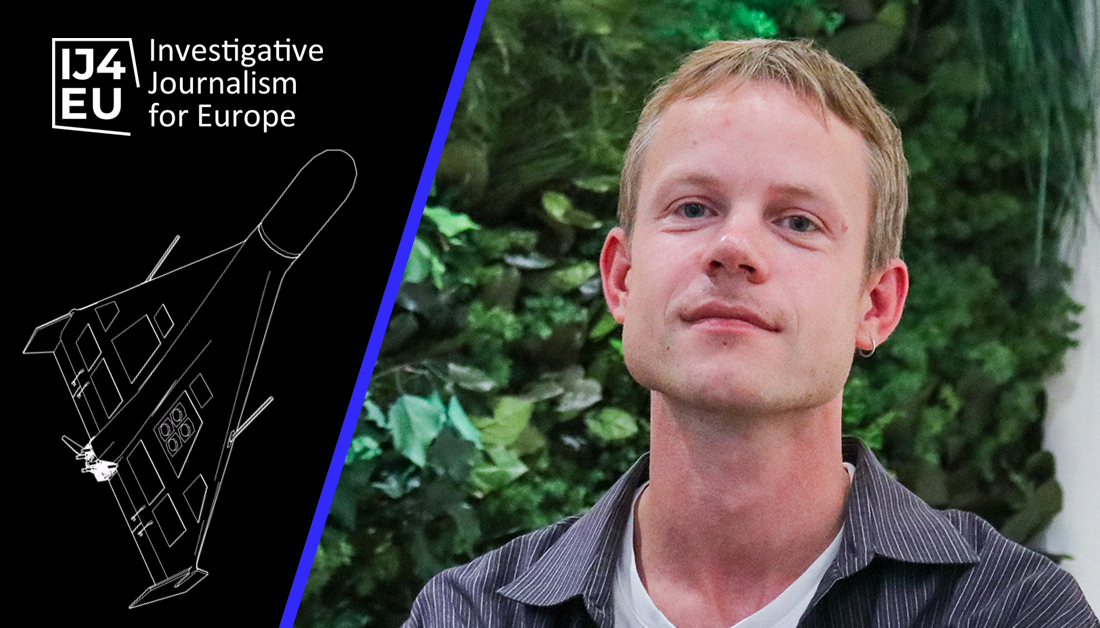By Lauren Beauchamp
In the ever-evolving landscape of modern warfare, drones have become a ubiquitous presence, reshaping conflicts and redefining strategies. Russian forces continue to wage technologically advanced warfare in Ukraine, exploiting an unexpected resource: Western technology.
A team of cross-border journalists has revealed how components made by companies in the European Union are powering drones used by Russia’s war machine — all despite sanctions.
“Western technology finds its way into these drones, paradoxically benefiting numerous European and American companies despite all these sanctions meant to have the opposite effect,” Danish freelance journalist Nikolaj Houmann told the International Press Institute in an interview.
Houmann coordinated Russia’s War, Europe’s Burden, an IJ4EU-supported investigation carried out in partnership with reporters from German news outlet Der Spiegel and Airwars, a British non-governmental organisation that monitors how conflict affects civilians.
The team tackled the investigation in three parts, each unveiling the role of players in different countries in enabling drone supplies to Russia.
For Ukraine, the stakes could not be higher.
“Drones have proven to play an unprecedented role in the development of the Ukraine conflict, with Russia’s use of Iranian drones at some point nearly causing the Ukrainian air defence to collapse,” Houmann said.
German components, Russian drones
Through analysis of Russian customs data, the team started to make connections with a range of components produced by Western companies.
“We identified a substantial amount of electronics from well-known manufacturers that ended up in the hands of sanctioned Russian companies with close ties to the Russian military-industrial complex,” Houmann said. “But it was quite surprising to discover the extent of German manufacturers involved in this supply chain.”
German firms identified in the investigation included Infineon Technologies, Germany’s largest semiconductor manufacturer, assembly materials maker Würth, Photonics company AMS Osram and Industrial Components Weirich, which specialises in network infrastructure and wireless communication.
Iran and Russia: A covert alliance
Next came the revelation of covert collaboration between Russia and Iran in supplying drones for use in Ukraine. The partnership has used a Tatarstan-based factory as the grounds for what became Albatross, a Russian group’s new drone production site.
“It’s interesting that Russia’s demand for drones seems to have taken Russian-Iranian arms collaboration to a new level,” Houmann said. “We found indications that Russia was in the process of establishing a factory for Iranian-designed drones on Russian soil, including job advertisements for Persian-speaking interpreters and drone engineers.”
Shahed drones: A deadly arsenal
The final part of the investigation shed light on the notorious Iranian-made Shahed suicide drones. Shahed drones, known for their slow but formidable approach, have wreaked havoc in Ukrainian cities, far from the frontlines, targeting energy grids and vital warehouses and killing civilians.
Houmann explained how the team worked together to trace Russia’s use of the drones.
“Sanjana (Varghese) from Airwars has been accurately monitoring and confirming each attack involving Iranian Shahed drones for months, using both open-source methods and information from the Ukrainian military,” he said.
“This allowed us to build a map of the launches, identify launch sites, and understand attack dynamics, shedding light on new aspects of Russian drone strategy.”
Since September 2022, Russian forces have launched around 2,000 Shahed drone attacks in Ukraine, the investigation found.

Impact and aftermath
Houmann said the cross-border element encouraged by the IJ4EU grant was key to the investigation’s success.
“The scheme was really advantageous, as we each contributed with our specific expertise,” he added. “I have experience with arms exports and supply chains, while Sanjana Varghese and the rest of the Airwars team possess technical knowledge about drones, experience in monitoring civilian harm, and excel in visual investigations. In addition, Oliver Imhoff and Alex Epp from Der Spiegel closely monitor the Ukraine conflict and are skilled in open-source intelligence.”
Following the exposé, the United States slapped sanctions on three companies involved. In a significant development, German police arrested the director of Industrial Components Weirich for supplying the Russian military industry.
For more on this investigation, see Russia’s War, Europe’s Burden.
